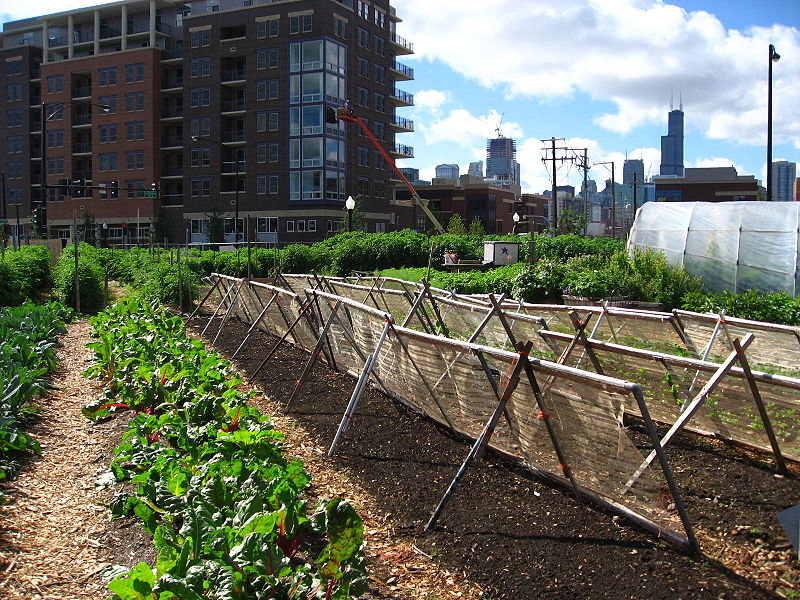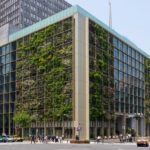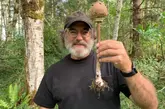The co-founders of Seedstock write that state and local governments must take bold, yet simple measures to correct the current major obstacle preventing real growth in urban farming — a viable distribution system.


Urban farming needs viable, localized distribution system
By Jason Reedand and Robert Puro, Published in Los Angeles Daily News
In 1900, 92 percent of Americans worked in agriculture. In 2014, it is less than 2 percent. America no longer has a direct connection to how its food is produced. This is a problem — not for sentimental reasons — because Americans must rely on secondhand portrayals and oversimplified notions of agriculture when they are making choices about food in the grocery store and in the voting booth.
There are three major archetypes for farmers. One is the Norman Rockwell vision of simple, humble families working too hard for very little return but sustained by their integrity and higher calling. The second is Cesar Chavez. These are low-skill, low-wage workers who are constantly being exploited in the name of cheap produce. The third vision is represented by companies like Monsanto and Con-Agra. It is massive, industrial scale agriculture that places profit growth above all other concerns. None of these are attractive models for how to produce healthy food and support a thriving economy.
But there is a new vision — a model where agriculture is reintegrated into urban and suburban areas — and locally produced food is sold and consumed locally. The growing local food movement is sometimes portrayed as a quaint but not particularly serious business, but there are examples of it fostering economic development, creating jobs and improving the quality and security of food all over the country.
First, the good news: Consumer demand for locally grown produce is at an all-time high, which is creating a new wave of farmers eager to start or expand small to medium-size agriculture operations closer to urban areas.
The bad news: Less than 3 percent of locally grown produce stays local.
STORY: Agricultural Urbanism: Designing Cities as Edible Ecosystems
State and local governments must take bold, yet simple measures to correct the current major obstacle preventing real growth in urban farming — a viable distribution system. Without fixing the missing link — the better “middleman” system — cities and counties will not realize the full potential of a robust urban farming system.
The U.S. Department of Agriculture recently took a major first step. Under the 2014 Farm Bill, USDA has earmarked $78 million to improve the distribution system and networks for locally grown produce. State and local governments must now match this historic investment.
Some may argue to let capitalism take its course when it comes to farm-to-table efforts. Large-scale commercial farming operations built their distribution system decades ago with resounding results. Yet, it is the sheer size and scope of these operations that demand an efficient system to collect (aggregate) and sort grains, vegetables and fruit, then ship them to market via rail car and trucks.
About five years ago, when consumers significantly shifted their focus to locally grown produce and sustainable farming, the “community- supported agriculture” movement began in earnest. A few restaurants began supporting or investing in sustainable farms. Loosely organized networks began investing directly in farms — but primarily to serve the interests of individuals who wanted guaranteed sources and direct delivery.
Local food sales almost doubled in three years to more than $7 billion by 2011, according to the USDA. Even as consumer demand for locally grown produce and meats continues to climb, the smaller farmer who toils near urban areas still has few options to bring the product to the consumer. For many, the only option is to set up a booth at a farmers market. In just the past year, entrepreneurs in a handful of urban areas have created localized distribution systems. Retailers like Whole Foods Market are helping get local produce into stores and are heavily marketing this attribute.
STORY: Detroit Works: Urban Farming and Reforestation as Neighborhood Preservation
A small stimulus on the part of cities and state governments is all that is needed to jump-start the new age of the “farming middleman.” Similar to other stimulus programs, good policy for cities and regional governments is to promote the development of “middle-market” shipping and delivery systems. To support the delivery needs of medium- and small-size farms, a distribution network must manage lower volumes from multiple sources, be able to handle a greater variety of produce and be flexible to greater production variables than our current food distribution system.
Growers selling into local and regional markets generate 13 full-time operator jobs per $1 million in sales as compared to three full-time jobs generated by outside commercial farms, according to the USDA.
One key to improving the urban farm system is aggregation. It’s easier, and certainly more cost-effective because of its scale, to collect on a daily basis hundreds of boxes of lettuce, truckloads of tomatoes, etc., sort them and then designate their ultimate destination — which is usually another, smaller sorting operation within a city. In the largescale commercial farming operation, it’s one crop with one fleet of semitrailers from one aggregated source. The aggregation system for urban farming is obviously different — which means it’s riskier for the entrepreneur who wants to create that network.
The law of supply and demand suggests that if a restaurant or grocery chain could have more guarantees of fresh, locally grown produce, they would place more orders. A minimum volume is required to keep a specialty item on the menu or to fill space on a produce aisle. The “middleman” aggregator/deliverer, therefore, must secure agreements from many more farmers to ensure adequate volumes.
Given the job creation potential, the commitment to improving local health, promoting sustainable industries, and the potential to significantly advance the growth of urban farming, cities and states must now look at incentivizing the new era of the farming “middleman.” The federal government has taken the first step, now it’s up to state and local government to provide the short-term incentives, guarantees and, possibly, job-training required to kick-start the key ingredient to truly bolster urban farming and improve food security.
Jason Reed, a movie producer formerly with Disney, and Robert Puro are co-founders of Seedstock.com, a Los Angeles-based social venture dedicated to promoting innovation and investment in sustainable and urban agriculture.












